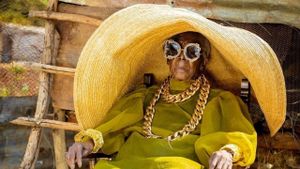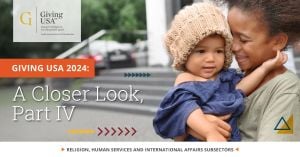Australian Fashion Week (AFW) faces significant transformations following the departure of IMG, the firm responsible for its management since 2005. This unexpected exit has sent shockwaves through the industry, prompting the Australian Fashion Council (AFC) to step up and offer its support, albeit on thin terms, with plans for at least one more event slated for 2025.
The uproar began when funding was abruptly pulled for the Fashion Week, leaving many designers and industry professionals scrambling to navigate what this meant for their livelihoods and the future of their brands. To address this uncertainty, members of the AFC gathered at the iconic Sydney Opera House, where they were joined by NSW Arts Minister John Graham to reaffirm their commitment to hosting the 2025 fashion event.
At this meeting, Marianne Perkovic, chair of the AFC, emphasized the urgency of community involvement to safeguard the event's legacy. "The time has come for Australian fashion to be represented by those who know it best—our own community," Perkovic stated, highlighting the need for creative and operational ownership of the fashion week.
Jaana Quaintance-James, the AFC's Chief Executive Officer, added weight to Perkovic's statements, reinforcing the idea of Fashion Week as more than just fashion shows. She called it "a pivotal creative platform" where the richness of Australian culture can shine on the global stage. This sense of identity and celebration is particularly pertinent considering the economics surrounding the industry, which boasts over 500,000 jobs and is said to pump more cash than the Australian wine export market.
Brands and designers are already feeling the weight of this transition. Having exhibited their work on international platforms, the uncertainty surrounding AFW’s future leaves many questioning how they will navigate this change. The departure of IMG—who positioned AFW as not just another fashion week, but as one featuring unique Australian flair—has led to calls for more grassroots involvement from designers and stakeholders.
The council’s intention to structure the upcoming event as not-for-profit echoes the successful strategies employed by other global fashion weeks like those in Milan and Paris. By shifting the focus onto community-led initiative, the AFC wants AFW to be more intertwined with local industry needs and aspirations, which could lead to fresher, more innovative presentations.
Planning for the 2025 event is already underway. The AFC announced the formation of an industry working group tasked with gathering feedback from its members on what Fashion Week ought to be moving forward. A survey will solicit input on everything from logistics to the kind of programming designers desire. The idea is to craft something reflective of Australia’s diverse fashion industry rather than merely replicative of esteemed events overseas.
Industry veterans see this as not just necessary but as a major opportunity for renewal. Acknowledging the shortcomings of the past administration, fashion insiders are excited about the prospect of reimagining the structure and flow of AFW. Collectively, there’s hope for Milwaukee-style streetwear pop-ups, bold experimental fashion, and digital showcases to emerge from this new framework.
Despite the hurdles, many designers reveal their optimism. Their voices, once drowned out by the flash of high-profile models and mega-brands, are yearning for change and space to breathe within the Australian fashion narrative. “This is our moment to make it right,” shared one prominent designer, wishing to remain anonymous for fear of potential backlash. “Australia’s unique styles and aesthetics deserve more than to be treated like footnotes; they should take center stage.”
While 2025 will mark the first year under AFC management, industry players are wary. Concerns about securing sponsorship, media exposure, and sufficient attendance loom large. Nonetheless, trends already indicate changing consumer habits, particularly among younger audiences seeking authenticity and engagement.
The rise of social media means brands no longer require conventional catwalks to achieve visibility. Already, some designers are exploring virtual avenues, allowing greater accessibility to audiences globally. This shift can mean bigger brand stories told through video, being shared across Instagram and TikTok, drawing the eyes of consumers who are tech-savvy and easily distracted.
Preliminary discussions hint at hybrid models, merging physical shows with virtual experiences to cater to vast audiences without limiting creativity. Designers are pondering innovations making their presentations interactive, allowing audiences worldwide to engage with their creations.
Rallying cries for support from key industry figures portray the collective endeavor toward revitalizing AFW not as mere nostalgia but imperative for stakeholder survival. The collaboration between the government, indie designers, and large brands should evolve Australian fashion, echoing newfound sentiments of unity within the fragmented industry.
Enthusiasm is echoed from industry experts who have long watched Australian designers struggle for footing on the international stage. The voice of fashion is no longer solely entrusted to IMG; it is now shared among many with vested local interests. This network of allied creative minds seeks to cultivate something palpable—an annual celebration of culture recognized not just within Australia but admired worldwide.
Despite the uncertainty, industry insiders remain hopeful for what this next chapter holds as they draft new guidelines for participation, inclusivity, and sustainability. The ultimate goal: to create not just another fashion week but a festival of creativity featuring the very best of what Australian fashion can be.
The decision to host Australian Fashion Week under the auspices of the AFC offers the opportunity for real transformation—one where industry voices, innovative ideas, and audience engagement drive the core of what it means to present fashion. 2025 could be the dawn of a new era, one where the spotlight shines brightly on something truly distinctive: Australian ingenuity paired with ethical practices.
With fashion weeks around the globe facing their own pressures—from sustainability to economic shifts—the spotlight is on Australia to provide insight and inspiration. The success or failure of the future rests not upon any singular firm, but rather upon the collaboration and vision of everyone involved. If the AFC and the Australian fashion community can work together harmoniously, the resurrection of Australian Fashion Week can be more than just hope; it can be established reality.



